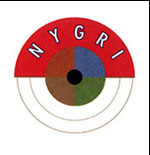



 |
 |
 |
 |
Click above to change
contrast or text size.
| Evaluating the zonules of patients with unilateral exfoliation syndrome (XFS), XFS before cataract surgery, and patients with poor pupil dilation using ultrasound biomicroscopy (UBM) |
|
Research Fellow: Cristiano Oliveira, M.D. Exfoliation syndrome (XFS) is an age-related disease characterized by the production and progressive accumulation of a fibrillar extracellular material in many ocular tissues. It has only recently been recognized to be the overall most common identifiable cause of glaucoma worldwide, and in some countries accounts for the majority of glaucoma. Patients with XFS are much more prone to have complications at the time of cataract extraction than are patients without XFS. Eyes with XFS dilate less well and have greater incidences of capsular rupture, zonular dehiscence, and vitreous loss. Sixty eligible patients, 20 of each group, unilateral XFS, XFS before cataract surgery and poor pupil dilation will undergo UBM exam. Images will be obtained from lens, zonular bundles and angle region (radial section) at 12:00, 1:30, 3:00, 4:30, 6:00, 7:30, 9:00 and 10:30 o'clock positions. Images of each sector will be evaluated by experienced UBM observer using a standardized scoring system based on the zonular appearance. Recognition and ability to diagnose XFS in a patient with cataract has become increasingly important since there is an increasing trend to operate on patients with cataract and XFS earlier to avoid complications. However, eyes with XFS often dilate insufficiently to make the diagnosis and may dilate only slightly or not at all when posterior synechiae are present. UBM can help to diagnose XFS prior to the surgery preventing some surgical complications. |
New York Glaucoma
Research Institute
310 East 14th St.
New York, NY 10003
(212) 477-7540